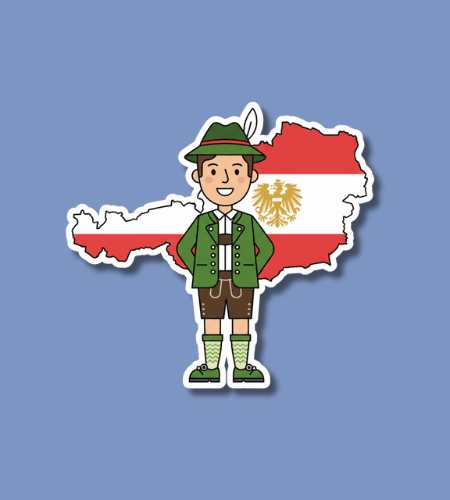The Austrian National Day, observed every year on October 26, marks a key moment in Austria’s modern history. It commemorates the day that the Austrian Parliament adopted the constitutional act declaring the country’s permanent neutrality in 1955.
Table of Contents
History of Austrian National Day
In the aftermath of World War II, Austria found itself occupied by the four Allied powers — the Soviet Union, the United States, Great Britain and France — each controlling a zone of the country, and Vienna likewise divided. Over the years this occupation restricted Austria’s full sovereignty. Eventually the Austrian State Treaty was signed on May 15, 1955, and entered into force on July 27 of that same year, ending the occupation and restoring Austria’s independent status.
On October 26, 1955, the Austrian Parliament passed the Federal Constitutional Law on the Neutrality of Austria, committing the country to permanent neutrality and ending the era of foreign troop presence and political oversight. A decade later, in 1965, that date was formally proclaimed as the National Day (Nationalfeiertag) of Austria.
Why is Austrian National Day important?
The Austrian National Day stands for more than just a date in the calendar—it encapsulates an idea of national identity rooted in peace, independence and self‑determination. After years of foreign occupation and external influence, the decision to enshrine neutrality was a statement that Austria would chart its own course. Having experienced the turmoil of war and external domination, Austrians embraced neutrality not simply as a policy but as something symbolic of their collective resolve to preserve autonomy and peaceful engagement.
Moreover, the day offers a moment of reflection. It connects the younger generation with a post‑war era in which the nation rebuilt itself, redefined its place in Europe and sought to reconcile its past. The routines of celebrations — from military parades to open‑house visits of federal institutions — link ordinary citizens with the institutions of state and create a shared experience of civic participation.
- Recognises the restoration of Austria’s full sovereignty after war and occupation.
- Emphasises peace and non‑alignment as core aspects of Austria’s self‑image.
- Invites citizens to engage with national institutions and public life.
- Connects present‑day Austria with its post‑war historical trajectory.
- Helps foster national unity around values of independence, democracy and public service.
How to Celebrate Austrian National Day
For anyone in Austria (or even abroad) October 26 is an opportunity to participate in something national yet accessible. One very simple idea is to visit one of the federal museums that offer free or reduced admission on this day — a relaxed way to gain insight into history, culture and the state’s work, while enjoying a public holiday atmosphere. Another is to attend or watch the formal events in Vienna: the president’s speech, the wreath‑laying at the Tomb of the Unknown Soldier, and the parade around the Hofburg, all of which carry a ceremonial yet friendly tone.
Families might mark the day by flying the Austrian national colours — red and white — perhaps hanging a flag outside or wearing something red‑and‑white when going out. In small towns, neighbourhood events, open‑doors at local government offices or simple get‑togethers over traditional food and drink bring the national dimension down to the local. For children and young people it could be as easy as doing a little research about why this day matters and sharing what they find with a parent or friend — turning a holiday into a conversation.
- Visit a federal museum or government building with free admission on this day.
- Watch the official ceremony or parade in Vienna (or online) to get a feel for the national mood.
- Display the Austrian flag or wear the national colours to show your involvement.
- Meet friends or family for coffee or a meal, and talk about what the day means for Austria.
- Encourage younger people to explore the history behind the day and bring their questions to the table.
Austrian National Day Dates Table
| Year | Date | Day |
|---|---|---|
| 2025 | October 26 | Sunday |
| 2026 | October 26 | Monday |
| 2027 | October 26 | Tuesday |
| 2028 | October 26 | Thursday |
| 2029 | October 26 | Friday |
Subscribe to our newsletter and never miss a holiday again!

